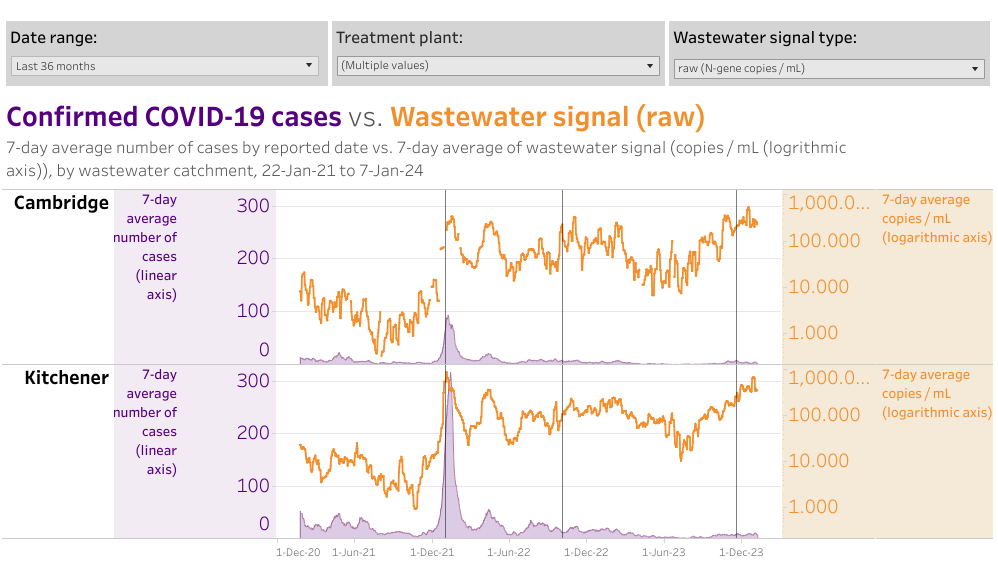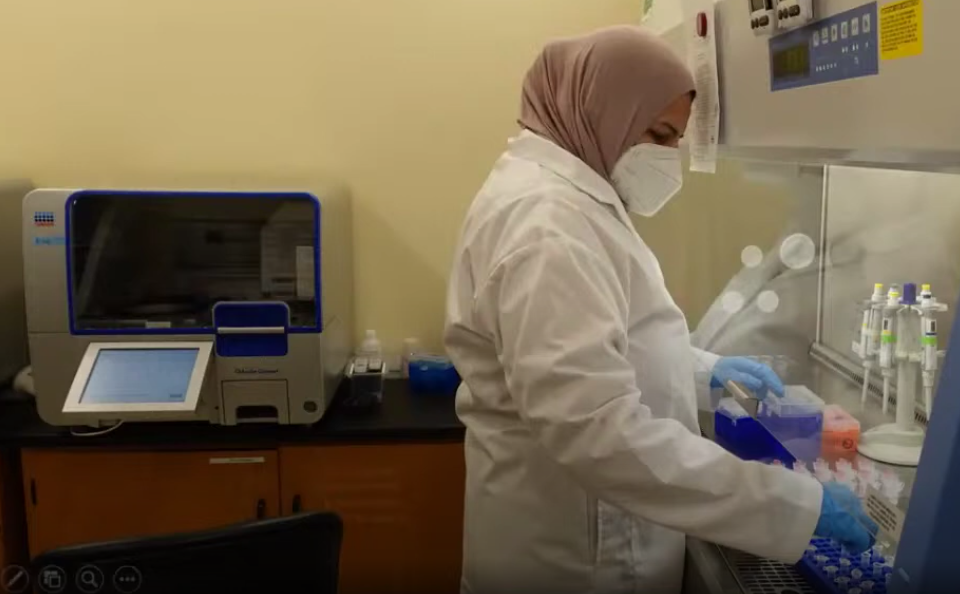As the COVID-19 pandemic slowly fades out of sight, out of mind for many, a team at the University of Waterloo continues to monitor it throughout the community.
The city's wastewater has become a key indicator of virus levels and can inform Region of Waterloo Public Health on trends and subsequent responses if required.
According to the public health website that includes data up to Jan. 12, the COVID-19 wastewater signal remains high in Cambridge over the past few months.
"This means there is still a significant presence of COVID-19 circulating in the community," Rachel Dawe, lab manager of the COVID-19 wastewater surveillance initiative at the University of Waterloo, said.
"Local respiratory virus activity in the Region of Waterloo continues to be consistent with provincial trends."
In the region there are 83 net new cases of COVID, with 160 being reported so far in 2024.
When it comes to outbreaks, there are currently seven in high-risk settings, including one in a congregate setting and six in long-term care or retirement homes.
Two deaths attributed to the virus have been reported this year.
However, hospitalizations have actually decreased over the past several months.
On Oct. 12 there were 41 people in hospital and today the number is down to 29.
The moving case rate has also dipped in that time period to 1.9 from 3.6 per 100,000.

To analyze the increased wastewater levels and community spread, it's important to understand how data is collected.
The process begins at the wastewater plant where small samples are taken throughout the day to form a larger “composite” sample that is processed by UW staff.
Through the extraction of RNA, tests are run for the presence of respiratory viruses including SARS-CoV-2.
The amount of SARS-CoV-2 in the wastewater is reported as a concentration through the number of gene copies of the virus per millilitre of water.
When combing through the numbers, Dawe's team is looking for trends over time.
"The absolute values don’t hold much meaning on their own, but when we track the trends of the concentrations, we can observe when there are high or low amounts of the virus circulating in the community," she said.
"This information can allow for individuals who are at higher risk to be aware of these low or high times of virus transmission."
So, why is there elevated wastewater levels but seemingly lower levels of COVID?
There's a few reasons, Dawe said.
"Wastewater surveillance captures viral material from both symptomatic and asymptomatic individuals," she said.
"Not all symptomatic persons get tested for COVID-19. Increased population-level immunity from vaccination and prior infection can reduce disease transmission even when wastewater levels are elevated and vaccinated persons who are less likely to experience severe symptoms and outcomes may shed less viral material."
For more information on COVID-19 and wastewater collection in the region visit regionofwaterloo.ca.



